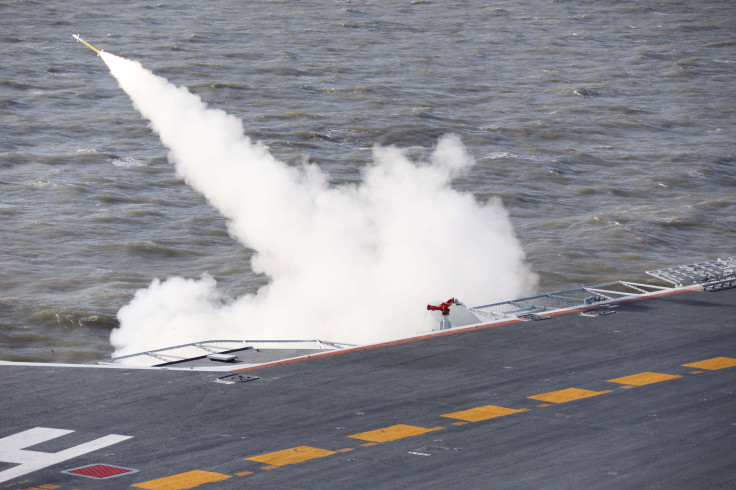China Seems To Have Accidentally Released A New Supersonic Cruise Missile

A video containing a two-second clip of what looks like a new type of supersonic cruise missile was released by China’s military just days before the Oct. 1 National Day celebration of the 70th anniversary of the People’s Republic of China. Showing the clip was likely unintentional as it was quickly withdrawn and replaced by another video with the mysterious two-seconds omitted.
The original footage was posted on social media and that was enough for “observers” of China’s military to take notice before it was removed. Some speculate that it might be a supersonic cruise missile like no other one in China’s arsenal.
The missile in the clip appears to have slim dorsal fins, foldable tail fins and additional propellant that suggest it is capable of flying long distances estimated at more than 1,000 km (680 miles) and speeds greater than the speed of sound (Mach 1 or 1,235 km/hour), according to at least one expert.
Another observer, who requested anonymity, noticed some items on the new missile that might be jamming and anti-jamming devices. The unknown observer commented, “These would enhance the missile’s ability to avoid electronic interference or guided interception by enemy missile defense systems, and therefore increase its chances of penetration.”
The People’s Liberation Army (PLA) Rocket Force is known to have missiles that launch at sub-sonic speeds like the Changjian-10, with an operational range of more than 1,500km (932 miles). This is the equivalent to a medium-range ballistic missile. Ballistic missiles will fly at higher altitudes and speeds making them a harder target for defense systems than cruise missiles.
The Rocket Force, however, has made significant progress in the development of glider vehicles for its ballistic missiles, like the Dongfeng-17 (DF-17), which can glide in the outer atmosphere at nearly Mach 5 or five times the speed of sound, making it even more difficult to defend against.
The National Day celebration will feature a huge military parade with Chinese President Xi Jinping officiating the day’s events. The parade was once an annual event from 1949 through 1960 but now is held on key anniversaries as it was for the 25th, 50th and 60th years in 1984, 1999 and 2009 respectively. Tuesday’s parade is expected to feature 15,000 troops, over 160 aircraft and close to 600 active weapon systems.
The DF-17 and another intercontinental ballistic missile, the D-41 with 10 nuclear warheads and a range to strike anywhere in the U.S. mainland are among the weapons that will be showcased at the parade. The question on many minds is: Will this new mysterious supersonic missile seen in the video be on display as well?
© Copyright IBTimes 2024. All rights reserved.





















